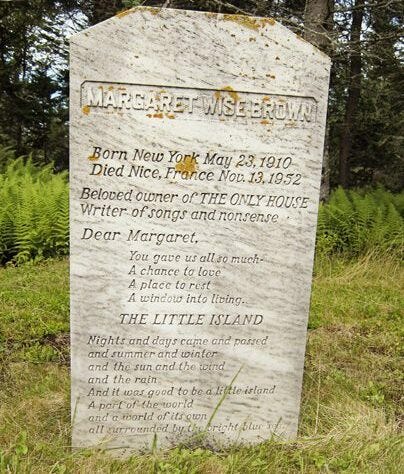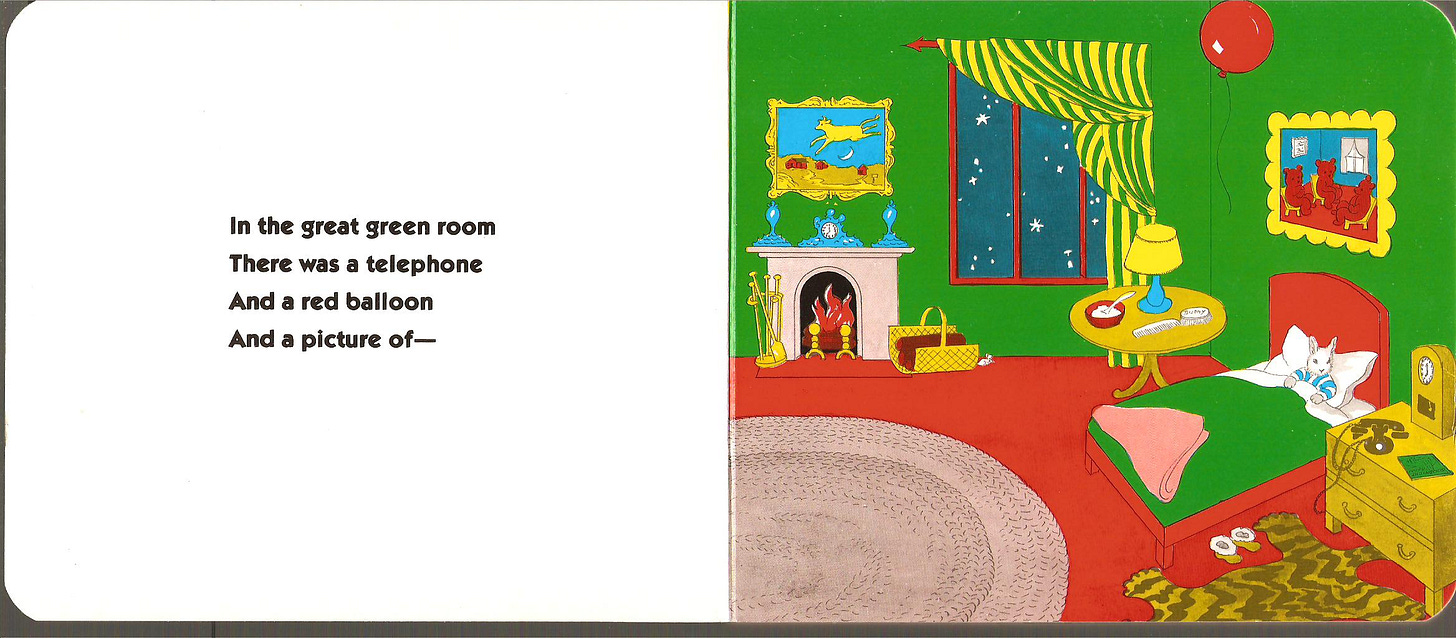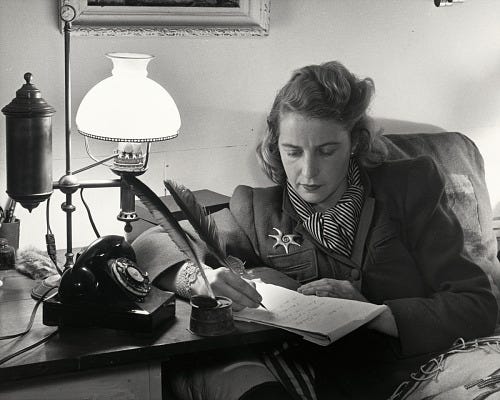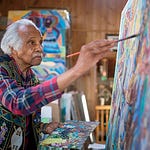Oh hi there!
How is your February going? You know, I thought February would feel less sloggy than January, but I’ve struggled all month to do basic things like eat and sleep.
It is times like these that I need to remind myself to take life a little less seriously and enjoy the small moments which brings me to the kid table vibe of the week…
Note: You can listen to this entire newsletter as a podcast or read it below.
Things that sound made up but aren’t!
Have you ever heard of Restless Leg Syndrome?
It sounds so fake — I wish it was —but it is very real.
Unfortunately I have the genes for RLS which means I often can’t fall asleep until three in the morning. Womp womp.
I like to imagine back in the olden days (before 1995 when the diagnosis became official) when my ancestors were trying to describe what was happening to them and nobody believed them because it sounds absolutely ridiculous:
“My leg just feels like it has to move all the time right when I’m about to fall asleep. Like it has a mind of its own.”
“It hurts but not like a normal pain. Like an irritating pain on the inside of my leg and the bottom of my foot.”
“One time I was on a flight and I had to take my shoes off because they were making my feet feel claustrophobic and my leg feel jumpy. Also I wanted to take my pants off because that helps it feel better but I didn’t.”
I mean imagine how that last one would go…
So yeah, that’s how it feels and lately it has been really bad.
(I see you playing your tiny violin.)
And yes, like my ancestors before me, I have to take my pajama pants off because they are making my legs feel jumpy.
(I see you abruptly stop playing your tiny violin, unsubscribe from this newsletter, and leave the room.)
All this to say, you can blame the lack of sleep for this absolutely unhinged newsletter.
Anyway, thanks for the space to chuckle about it.
On a hopeful note, after not being able to fall asleep until seven in the morning (it sucked), I finally tried melatonin again which hadn’t worked AT ALL for me as a teenager but actually helped this time! It’s a February miracle! I feel like a new person.

This week at my desk…
I got to review the proofs for my debut picture book HOW TO PEE YOUR PANTS (THE RIGHT WAY), and they look so good. Thanks to all those who have celebrated this book with me so far; some of you have even preordered copies already which means the world to me (and actually helps me look good to my publisher hee hee).
This week AT THE KID TABLE, we’re sitting with children’s book author Margaret Wise Brown!
But before we dive into that, I just wanted to let you know that though I’ve appreciated all that I learned from the SUPER thorough studies of children’s book creators, they’ve taken a lot out of me.
So I’m simplifying just a bit.
Instead of collecting a million things, I’ll just focus on 3-5 things I’ve learned which will reduce the podcast episodes to about 10 minutes — a quick dose of kid table vibes and creative inspiration.
I’m a bit nervous about this shift as those long posts were my most popular and most shared. But I hope you will also like the more bitesize version, especially because I know you are busy and reading the long posts is quite the commitment.
Onto learning from the great Margaret Wise Brown!
You probably know Margaret Wise Brown for Goodnight Moon and The Runaway Bunny, but you may not know that she had a well-known feud with famous children’s librarian Anne Carroll Moore (who actually hated Goodnight Moon) or that she was heavily influenced by Gertrude Stein (whom she later helped publish a children’s book called The World is Round) or that she was engaged to a Rockefeller when she tragically passed away at the early age of 42.
She is one of the most intriguing people in children’s books, and I can’t wait to give you just a glimpse of her fascinating life and point of view.
A few fun facts and anecdotes
She was born in 1910 (not a super fun fact but important to give you an idea of the timeline haha).
She worked at the Bank Street Experimental School where she researched language—specifically repetition and sensory details which you’ve probably noticed in her books.
Goodnight Moon was not a huge hit when it was first published but became a word-of-mouth sensation over time. I found this description that I love: “Brown thought the book was successful because it helped children let go of the world around them piece by piece, just before turning out the light and falling asleep.”
She loved fur (like really loved it) which inspired her book Little Fur Family, illustrated by Garth Williams.
In the picture book The Important Thing About Margaret Wise Brown written by Mac Barnett, the illustrator Sarah Jacoby created bunny characters for parts of that book because Brown loved a woman named Michael Strange (her writer pen name), and they called each other “little bun” in their letters.

I stumbled upon a wonderful, quirky book of hers that I’d never read before called They All Saw It which is hard to find but luckily Barnett did a read aloud.
An NPR feature described Brown’s “dramatic and tumultuous love affairs with both men and women” and her interesting relationship with her audience. Some say she didn’t like children, which could be true, but as we learned from my previous post, Maurice Sendak also said he didn’t like children but then contradicted it in a million ways. Either way, Brown was at the very least fascinated by children and was super in tune with her own childhood.
Brown’s death was very sudden and strange and sad. While in France, she had to get an ovarian cyst removed. After a few weeks, she was feeling better, and the nurse came into check on her. Brown kicked her leg up to show how great she felt which dislodged an embolism in her limb that went straight to her brain. Months later, she passed away suddenly at the age of 42. (I learned this from the book Wild Things! Acts of Mischief in Children's Literature which has all sorts of interesting stuff about children’s book creators.)

Three things I learned from her life, work, and creative process
1. A great story is a combination of the predictable and unpredictable.
From What Writers Can Learn From ‘Goodnight Moon’ by Aimee Bender:
“Goodnight Moon” does two things right away: It sets up a world and then it subverts its own rules even as it follows them. It works like a sonata of sorts, but, like a good version of the form, it does not follow a wholly predictable structure. Many children’s books do, particularly for this age, as kids love repetition and the books supply it. They often end as we expect, with a circling back to the start, and a fun twist. This is satisfying but it can be forgettable. Kids — people — also love depth and surprise, and “Goodnight Moon” offers both.
This analysis rings true for me. I think I return to this book over and over again because of its combination of comfort and mystery.
The following quote sums it up perfectly. (I discovered it in one of my all time FAVORITE articles about Margaret Wise Brown by the talented
. If you haven’t subscribed to her newsletter MOONBOW, consider this a sign.)2. To write the truth, you must be in tune with the reality of your audience.
In her essay Writing for Five-Year-Olds (read the whole thing if you can — it is amazing!), Brown said that there is “one final determiner or denominator that gives the writing truth or falseness, and that is the reality in which the writing is concerned. So what is a five-year-old child’s reality and concern?”
She said one way to know that answer is to connect with our inner five-year-old.
If we are writing for these delights and interests of five-year olds we must remember them and experience them in our stories.
And another thing.
No matter how important we know little kittens and steam engines to be to a five-year-old, no one can ever write about them without a real love for them and familiarity with them in some form—actual or remembered.
When I was learning about the children’s book industry, I received a lot of advice like your book needs to have trucks or boats or animals or bright colors because kids love those things. Some kids do love those things BUT if I don’t love them, I shouldn’t write a story about them. My best work has happened when I find something I love that intersects with what a child loves (especially if it is what little Rachel loved).
If we’re not sure what a child loves, Brown encourages us to ask them!
What do they play when they are alone? What do they laugh at? What makes them sad? And what do they want to know? These are the things to find out. These and any number of others are the leads to get from five-year-olds themselves.
I don’t know about you, but I’m thinking that whole “I don’t like kids” quote is a bit more complicated ;)
3. Respect children’s books as real literature.
If you can’t tell just how much Brown respects her reader, let’s continue our journey through her wonderful essay.
When a child reaches the age of five, he is the sum total of all his younger experiences and discoveries in a brand new world….For the first time, he has the power of words, to use them and to hear them, to describe the things that his five-year-old senses perceive. He has his feet firmly enough on the ground now to go bouncing off on the most hilarious flights of imagination and to sympathize with and be curious about situations not his own.
Here then is a challenging age to write for.
Children’s books are treated like children are treated. When we dismiss children’s books as something less than “real” literature, we also dismiss children.
And why should not a child's story submit to the same standards of good honest writing as any real literature?
Margaret Wise Brown felt excited about her five-year-old audience and considered them “as intelligent an audience in rhythm and sound as the maddest poet's heart could desire.”
And doesn’t an audience like that deserve our very best?
A big thank you to the sponsors of this post!
Thanks to Whiskey Geraldine for our podcast music and Joanna Rowland, Marietta Apollonio, Saki Tanaka, and Angela Pham Krans for sponsoring this episode. To become a sponsor, you can upgrade to a paid newsletter subscription.
Thanks for sitting AT THE KID TABLE with me today.
Until next time! I’ll save you a seat right next to me.
Your-wanting-to-wear-a-cool-brooch-like-Margaret-Wise-Brown friend,
Rachel






















Share this post